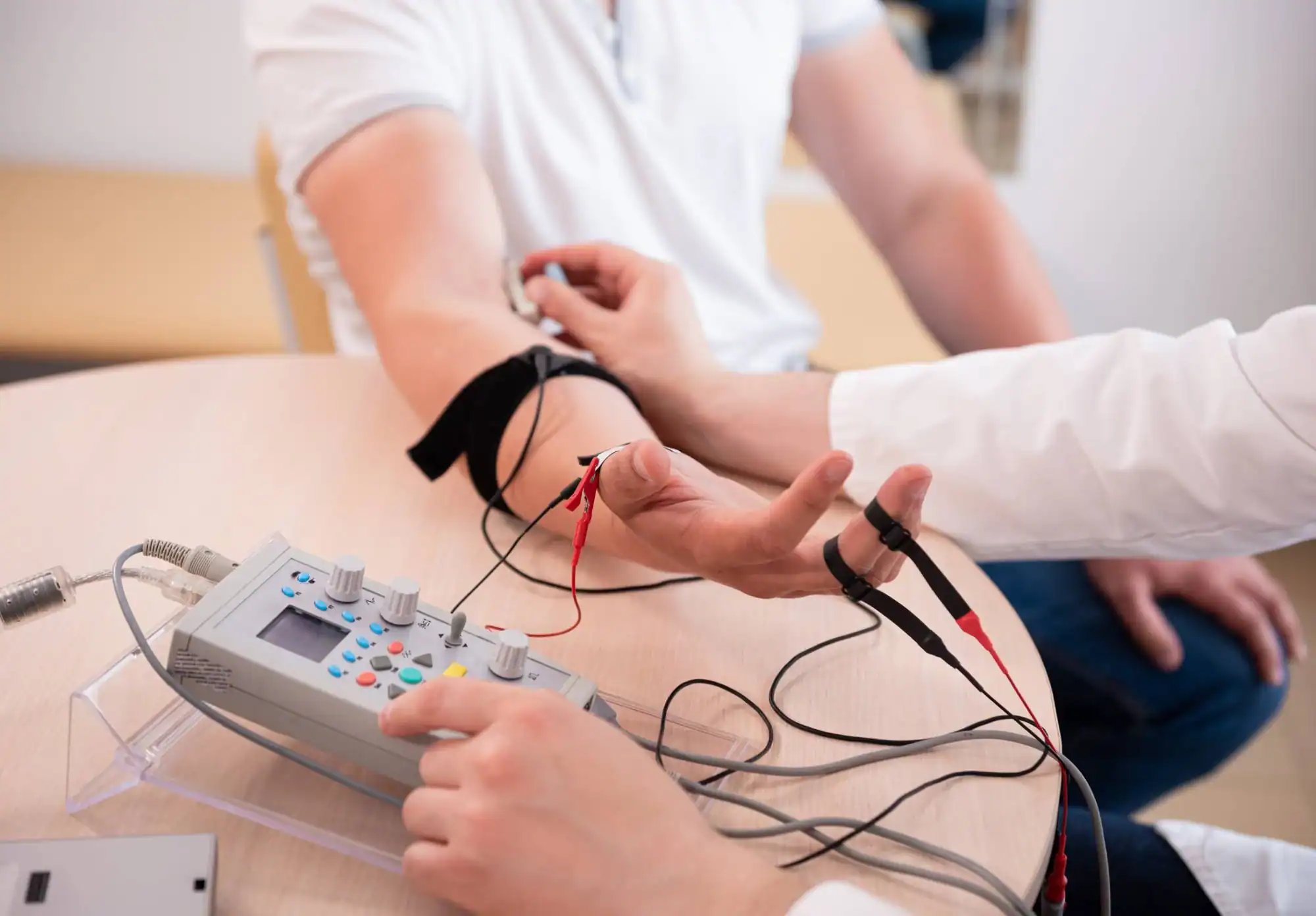Advanced electrodiagnostic testing that pinpoints exactly what’s causing your symptoms—so you can finally move forward with the right treatment.
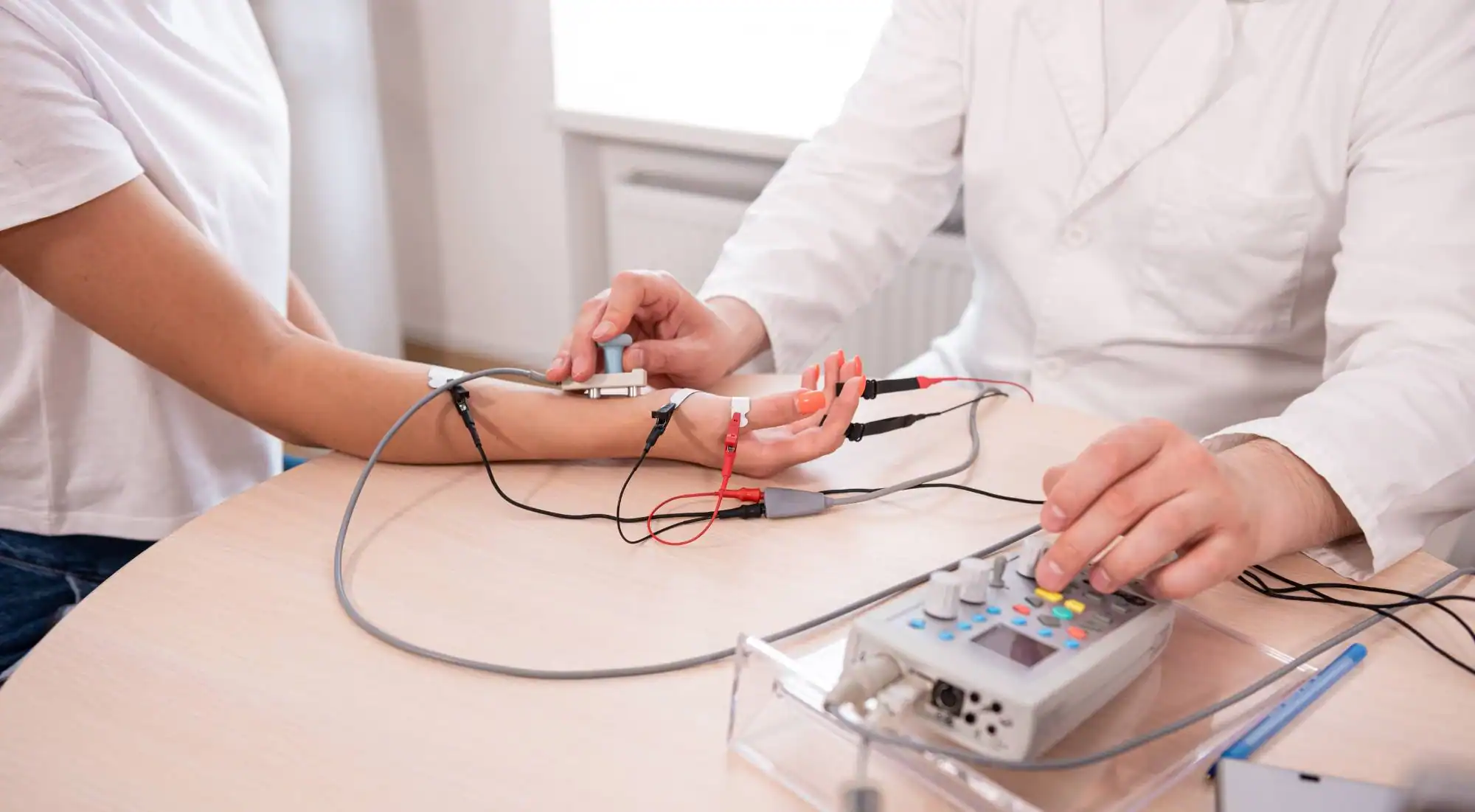
Reviews
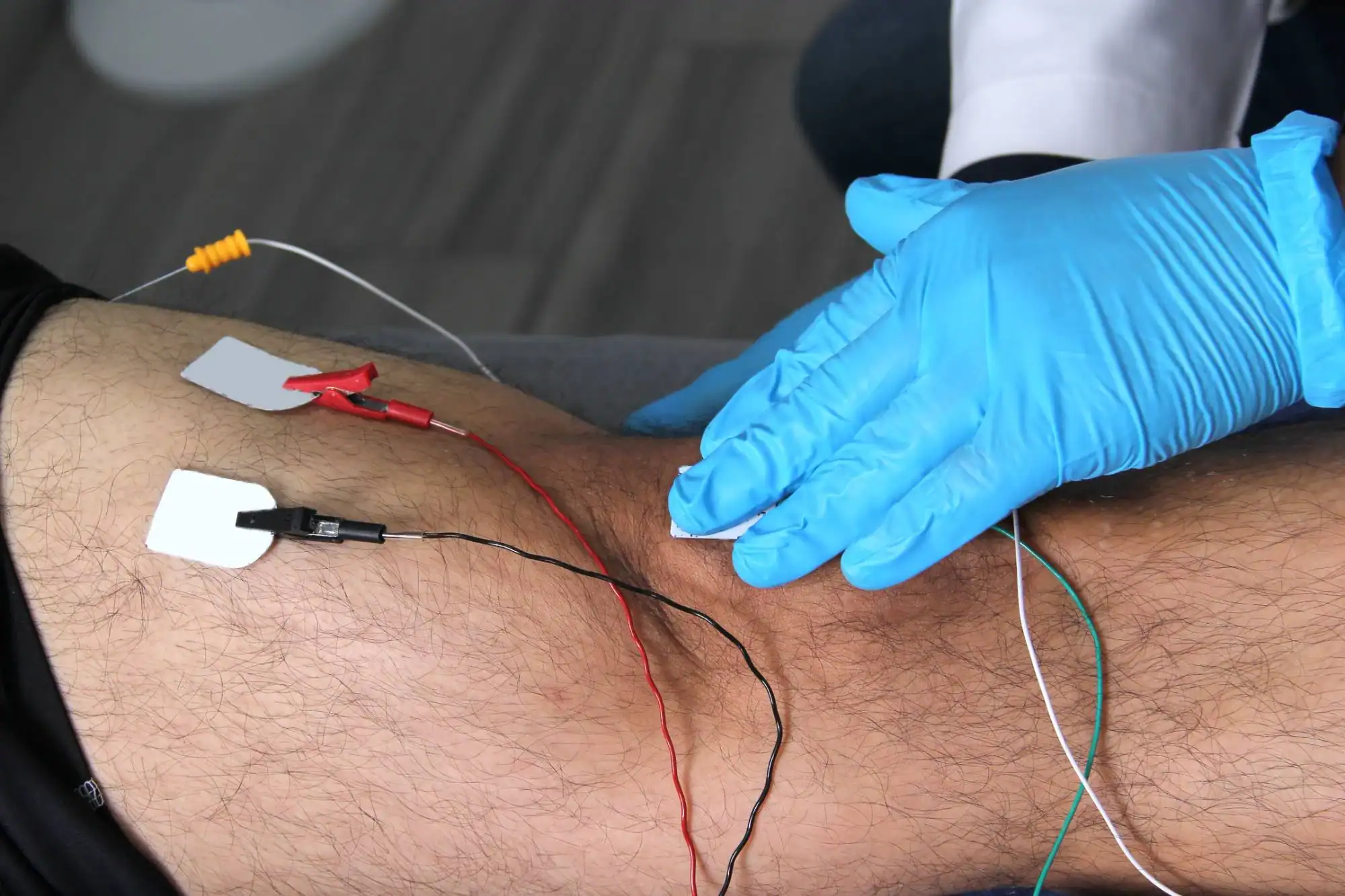
That numbness in your hands doesn’t have to remain a mystery. The shooting pain down your leg doesn’t have to be something you just live with. EMG testing gives you concrete answers about what’s happening with your nerves and muscles.
Within 30 to 45 minutes, you’ll know whether that tingling is carpal tunnel syndrome, if your back pain involves nerve compression, or if your muscle weakness points to something that needs immediate attention. No more guessing. No more wondering if it’s “all in your head.”
You’ll walk out with a clear diagnosis and a realistic plan for what comes next. Some conditions need surgery. Others respond well to physical therapy or medication. But you can’t make the right choice until you know what you’re actually treating.
NY Spine Medicine has been serving Northern New Jersey for years, helping patients get to the bottom of nerve and muscle problems that other doctors couldn’t quite pin down. We specialize in spine-related conditions, but our expertise extends to any nerve or muscle issue that’s affecting your daily life.
Located right in Leonia, we understand the unique needs of commuters, office workers, and active individuals dealing with repetitive strain injuries and chronic pain conditions. Our focus isn’t on rushing through appointments—it’s on getting accurate results the first time.
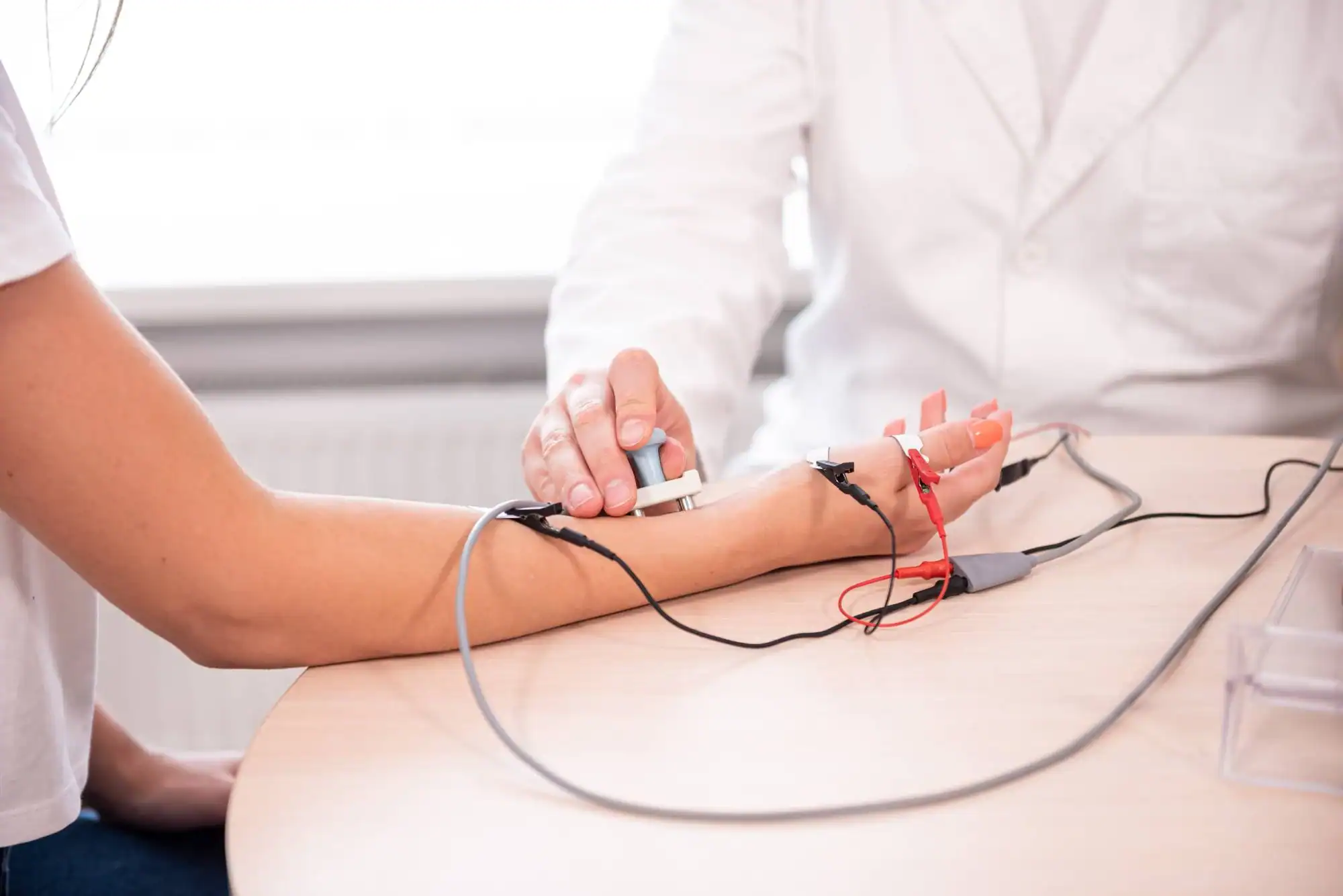
The process starts with a conversation about your symptoms—when they started, what makes them better or worse, and how they’re affecting your life. This helps us know exactly which nerves and muscles to focus on during testing.
The EMG portion involves placing small electrodes on your skin or inserting thin needles into specific muscles. You’ll be asked to contract certain muscles while the machine measures electrical activity. The nerve conduction study uses small electrical pulses to test how well signals travel along your nerves.
Most people find the testing uncomfortable but not unbearable. Think of it like getting blood drawn—brief moments of discomfort for valuable information. The entire appointment typically takes 30 to 45 minutes, and you’ll get your results before you leave.
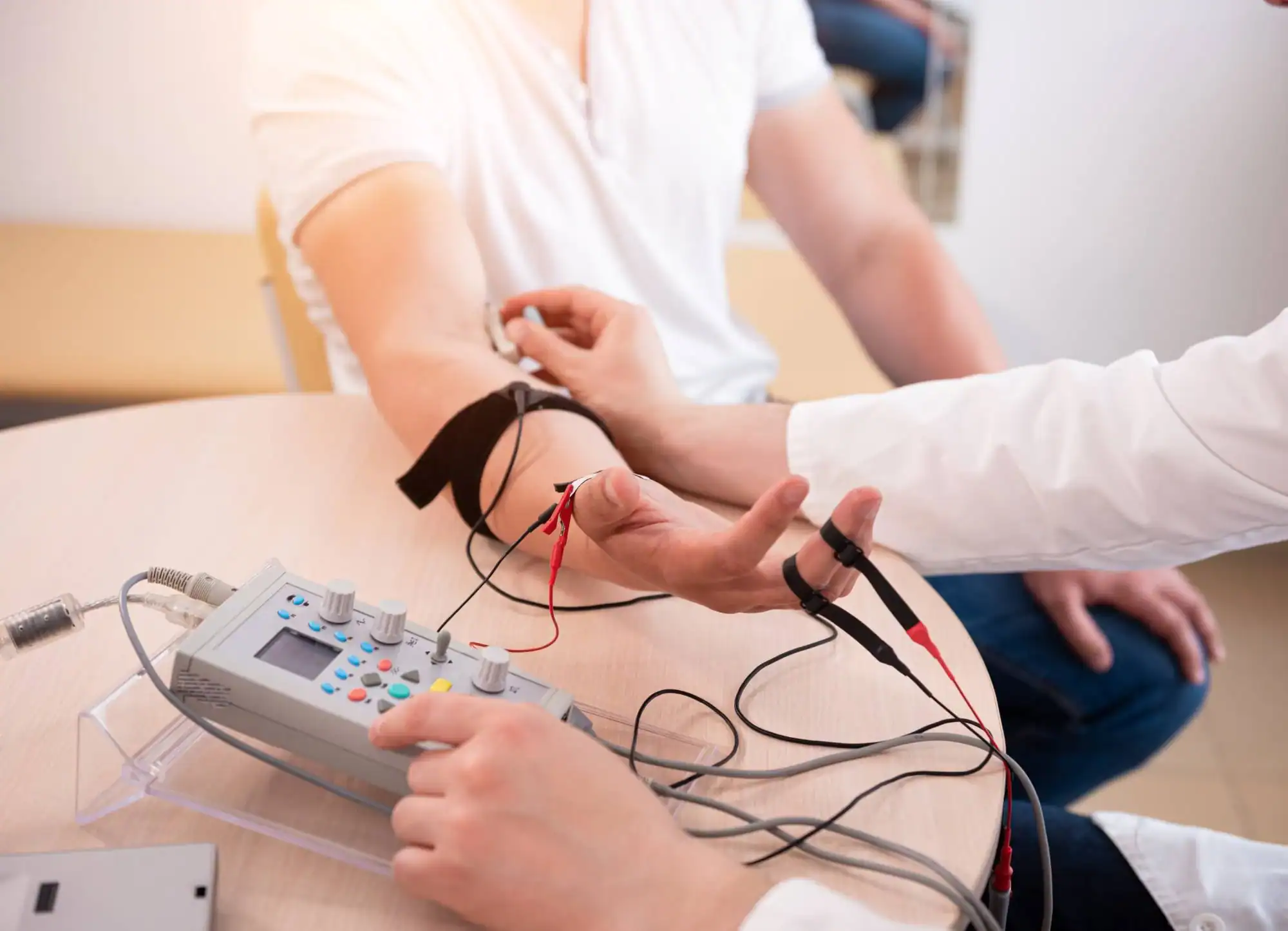
Ready to get started?
Your EMG testing includes both electromyography and nerve conduction velocity studies—the gold standard for diagnosing nerve and muscle disorders. This comprehensive approach catches issues that single tests might miss.
The evaluation covers common conditions like carpal tunnel syndrome, ulnar neuropathy, sciatica, peripheral neuropathy, and various muscle disorders. Whether you’re dealing with diabetes-related nerve damage, workplace injuries, or unexplained weakness, the testing provides clear diagnostic information.
You’ll receive detailed results explaining exactly what the tests found, what it means for your condition, and realistic treatment options. No medical jargon that leaves you more confused than when you arrived—just straightforward information you can actually use to make decisions about your care.
